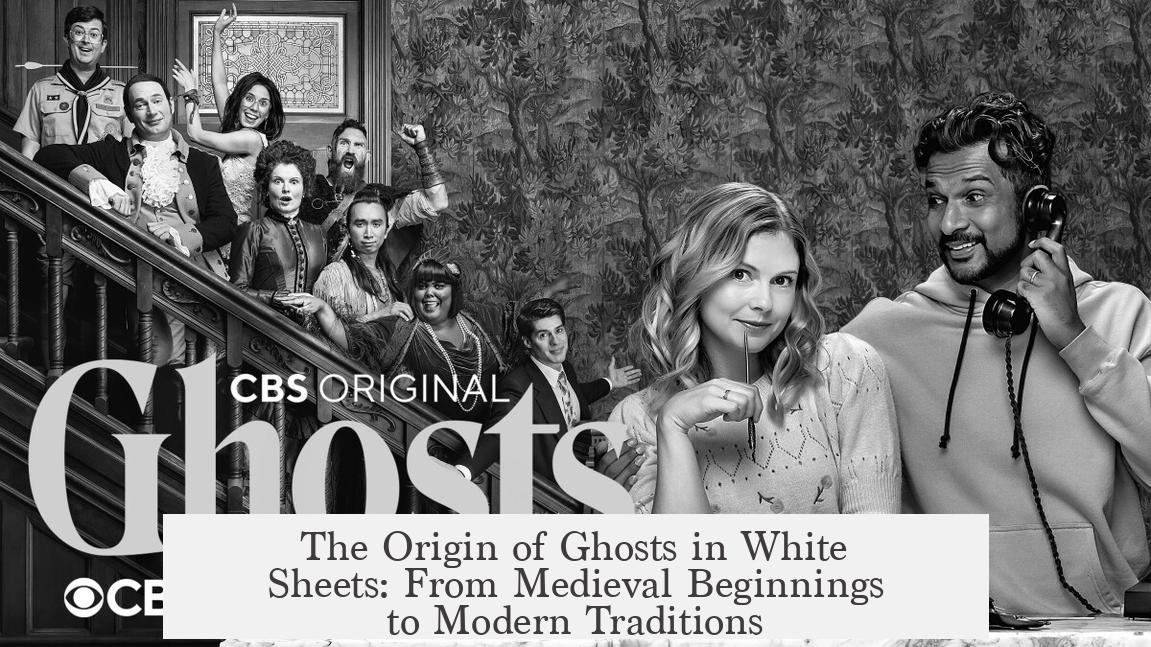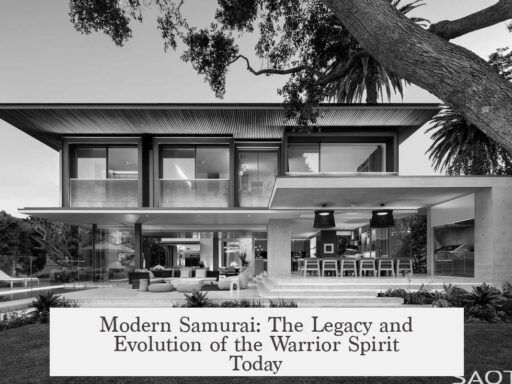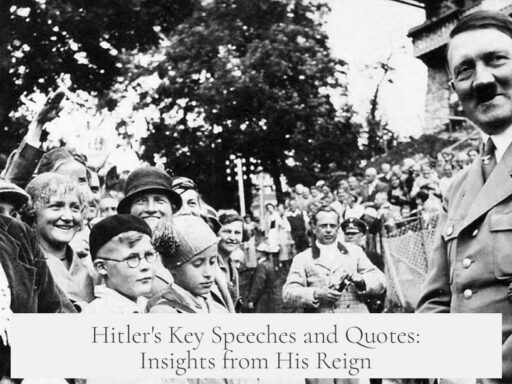The association of ghosts with white sheets originates from the use of burial shrouds, particularly from the Middle Ages onward. The iconic white-sheet ghost image derives from centuries-old depictions of the dead wrapped in white burial cloths. This motif gained popularity during the 18th and 19th centuries, evolving from symbolic and religious representations into the popular Halloween ghost costume known today.
The white-sheet ghost has two key elements: the color white and the sheet itself. The “sheet” is better understood as a shroud—a burial cloth used to wrap deceased bodies. Medieval European art and literature often show spirits or resurrected dead figures covered in such shrouds. For example, 13th-century depictions include dead men wrapped in white cloths. In 14th-century works like Guillaume de Diguilleville’s Pèlerinage de vie humaine, ghosts in burial shrouds appear repeatedly. Another example is the Tickhill Psalter from 14th-century England, illustrating the prophet Samuel raised from the dead, cloaked in his shroud.
The white color relates closely to burial customs. Although historical records vary on how common white shrouds were, they often symbolized purity, spiritual awakening, or social status in medieval ecclesiastical contexts. In religious texts, clothing worn by the dead reflects their moral or spiritual condition. For instance, in the Dialogus miraclorum, a wicked monk’s ghost initially appears in black but later wears a white hood symbolizing purification after purgatory. These symbolic choices influenced how medieval audiences viewed the dead and, by extension, their ghostly representations.
It is important to exercise caution when connecting medieval ecclesiastical art with popular folk images of ghosts. Most medieval ghost depictions come through religious texts, which used visual symbols to reinforce Christian cosmology. These images were intentionally crafted with specific theological messages, so they may differ from folk beliefs. The link between these religious motifs and the later, secular white-sheet ghost imagery is suggestive but inconclusive.
Some scholars argue that the use of white and transparency in ghost portrayals served as artistic devices to emphasize otherworldly qualities. The white shroud conceals identity, enhancing the ghost’s mysterious and spiritual aura. White also aligns with Marian symbolism—ghosts appearing white could metaphorically serve as emissaries of the Virgin Mary, highlighting their connection to sanctity.
Medieval depictions of the dead were diverse and sometimes contradictory. Descriptions of the defuncti (deceased spirits) varied, reflecting complex cultural attitudes. After the 15th century, more gruesome “macabre” images—showing emaciated corpses—became widespread alongside more symbolic white-shrouded figures. These depictions changed based on audience, context, and message. They illustrate an ongoing dialogue between storytellers and listeners, using culturally charged motifs to explore death’s nature and the dead’s role in society.
| Aspect | Explanation |
|---|---|
| White Sheet as Shroud | Originates from burial cloths wrapping the dead, symbolizing death and concealment. |
| Medieval Artistic Examples | 13th-14th century manuscripts depict ghosts wrapped in shrouds as spirits of the dead. |
| Symbolism of White | Symbolizes purity, spiritual status, or sanctity in religious contexts. |
| Religious vs. Folk Contexts | Ecclesiastical sources shaped ghost imagery, but folk depictions may differ. |
| 18th-19th Century Popularity | The white-sheet ghost image becomes widespread in secular Halloween and folk culture. |
The transition from medieval religious imagery to a secular ghost costume reflects changes in culture and storytelling. The white-sheet ghost remains popular because it is simple and evocative, instantly signaling “ghost” without complexity. It connects the viewer to ancient traditions of death rites and the mystery of spirits while fitting modern aesthetic needs.
- Ghosts appear in white sheets due to their origin as burial shrouds.
- Medieval art frequently depicts ghosts wrapped in white cloth, symbolizing death and spiritual status.
- The color white is linked to purity and sanctity within ecclesiastical contexts.
- Religious texts influenced ghost imagery more than folk tradition in medieval times.
- The white-sheet ghost costume became popular in the 18th and 19th centuries in secular culture.
How Did Ghosts Become Associated with White Sheets?
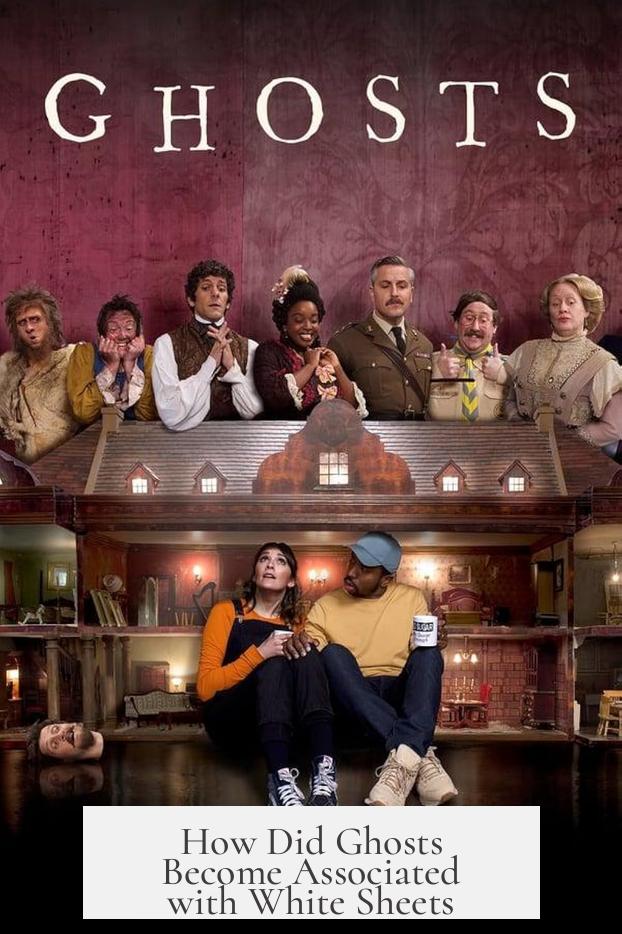
Ghosts became associated with white sheets because these sheets originally represented burial shrouds used in the Middle Ages, and this imagery gradually evolved into the classic ghost costume we know today.
This association didn’t happen overnight. It’s a fascinating journey that starts deep in history and winds its way into modern culture. Interested in why your Halloween ghost looks like a floating white sheet? Let’s dig in.
First off, think of the sheet not as a random cloth but as a shroud. Burial shrouds—simple white linens wrapped around the dead during their final rest—are the very roots of this ghostly look.
A Medieval Beginning
Believe it or not, the motif of a ghost wrapped in cloth dates back to medieval times. Art and literature from the 13th and 14th centuries show figures rising from graves, draped in wrinkly, ghostly sheets. For instance, the Cantigas de Santa Maria features depictions of dead men in their burial cloths, just like skeletons debuting their final fashion.
The famous “Samuel and the Witch of Endor” scene from the 14th-century Tickhill Psalter shows Samuel’s ghost materializing in his burial shroud. So, medieval stories and images firmly establish the link between death, cloth, and ghosts.
Why White?

If the sheet is a shroud, why white? White probably symbolizes purity and the spiritual world—think about how white is often linked to peace or heavenly beings. The Color White and burial practices have some complicated interplay.
However, the white shroud’s prevalence isn’t fully clear. Historical records don’t always agree on whether white was common for burial cloths. Still, white appears a lot in ecclesiastical texts, often loaded with symbolism.
Here’s a twist: in the medieval Dialogus miraclorum, a ghostly wicked monk first shows up draped in black. After “cleaning up his act” through purgation, he reappears wearing the white hood of his order. That means white can symbolize redemption, status, or transformation, not just death.
But beware of mistaking medieval religious art as direct evidence of popular ghost beliefs. These depictions often served Christian teachings and may not represent how everyday people imagined ghosts.
The Shroud Vs. The Sheet
So, the sheet isn’t just any sheet—it’s a shroud with weighty significance.
Historically, shrouds were simple, white linens used to wrap the dead before burial. The idea of a ghost wrapped in this cloth ties into the story that a ghost is a spirit lingering near its body or its death site, still “cloaked” in the last garment it wore.
This symbolism got a quirky but memorable makeover during the 18th and 19th centuries. That’s when the modern “floating ghost in a white sheet” really caught on.
Why? For practical reasons, too. White sheets were easy, cheap costumes long before fancy Halloween outfits were mass-produced. Kids and actors used them to evoke a spooky figure. This practical nod to history depends less on hollow symbolism and more on good, old-fashioned creativity and convenience.
Variability and Storytelling
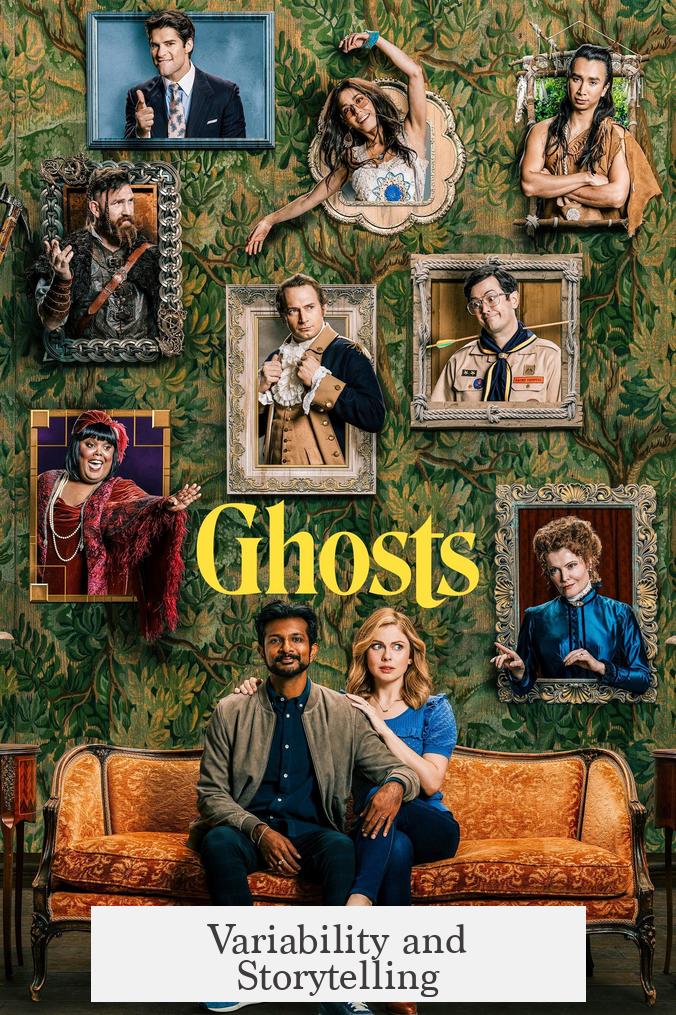
Not all ghosts wear white sheets, though. Medieval tales portray the dead in many diverse, imaginative ways, from eerie, emaciated corpses to glowing phantoms, and sometimes even dressed in black or other colors.
Descriptions of ghosts in older stories are often ambiguous and deliberately open to interpretation. This ambiguity sparks a magical conversation between storyteller and audience, using costumes and motifs to explore themes of death, morality, and the afterlife.
The white sheet, then, isn’t a universal ghost uniform but one motif among many. It’s a symbol that combines death’s practical reality—burial shrouds—with spiritual or artistic signaling, like purity or concealment.
Modern Ghosts: From Graveyard to Halloween Parties
So how did a medieval burial cloth hop from tomb to trick-or-treat? Simple—it’s iconic and stalks the collective imagination.
The image adapted over centuries. The white-sheet ghost became a staple in literature, theater, and later films by the 18th and 19th centuries. This move coincides with societal changes, increased literacy, and popular culture’s blossoming traditions.
Also, it helped that crafting a ghost costume from a white sheet was affordable and effective for children and performers. The ease sealed its place in Halloween culture, from spooky decorations to fun costumes.
What Can We Learn?
- Ghosts wrapped in white sheets trace back to the Middle Ages, where burial shrouds played a crucial role.
- White symbolizes purity, transformation, or spiritual emissaries within religious contexts.
- The modern white-sheet ghost image gained popularity during 18th- and 19th-century entertainment and folk customs.
- Not all ghosts are white-sheeted; medieval depictions vary widely, reflecting complex beliefs about death.
- The interplay between art, religion, and storytelling shapes how cultures visualize ghosts.
Next time you see a ghost costume, you’re looking at centuries of history woven into that simple white cloth. It’s a ghost story told visually—one that shows how people understood death and mystery through an accessible, haunting image. Isn’t that way cooler than just a Halloween cliché?

